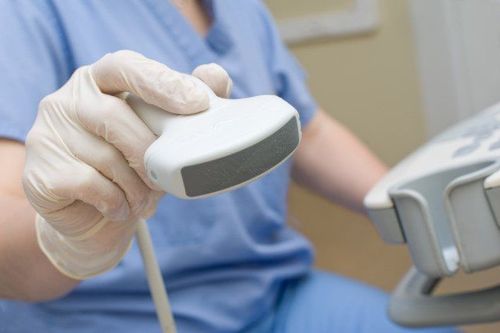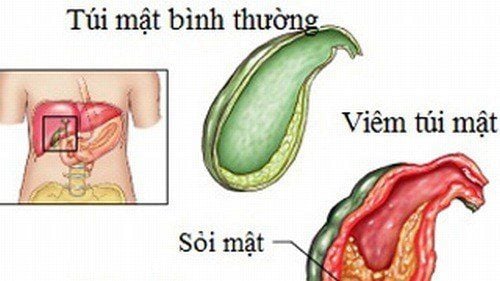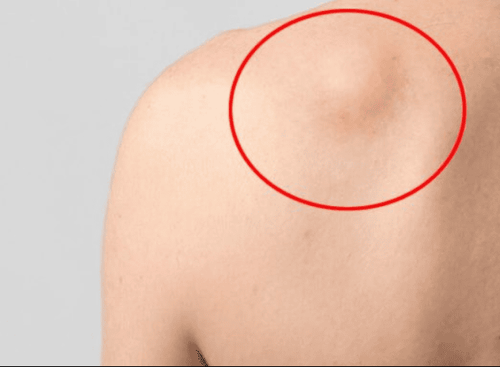This is an automatically translated article.
Gallbladder polyps and gallbladder cancer are diseases of the gallbladder, which can have negative effects on the patient's health. Early detection and treatment of these diseases is the best measure for patients to improve their quality of life.
1. Function of the gallbladder
The gallbladder is a small blue sac-shaped organ with a capacity of about 30 - 60ml. It adheres to the right lower lobe of the liver and connects to the biliary tract through the cystic duct. The gallbladder functions to concentrate and store bile that is secreted by the liver. When people eat, especially when consuming fatty foods, the gallbladder will contract to push bile into the bile duct, go down the duodenum, mix with food to digest fat.
2. What are gallbladder polyps? What is gallbladder tumor?
Gallbladder polyps are tumors or pseudotumors growing on the surface of the gallbladder lining. Thus, gallbladder polyps can be considered as gallbladder tumors (papillomas of the gallbladder gland). Gallbladder polyps occur at any age but are more common in the 30-50 age group (in both sexes). Are gallbladder tumors dangerous? Most gallbladder polyps (gallbladder polyps) are benign. However, there is still a small percentage of gallbladder tumors that progress to cancer.
Based on the cause of the disease, gallbladder polyps can be classified into the following types:
Cholesterol polyps: Occupy the highest incidence, tumors less than 10mm in diameter, often polyps. The cause of polyp formation is the deposition of cholesterol on the gallbladder wall; Inflammatory polyps are essentially fibrous scar tissue, formed by chronic inflammatory lesions on the gallbladder surface. The diameter of polyps is usually less than 10mm, not wide and not cancerous; Adenomatous polyps: Also known as biliary gland neoplasms, are precancerous lesions with tumor size from 5 to 20 mm, pedunculate or pedunculate, solitary appearance, often associated with cholelithiasis or inflammation of the gallbladder. chronic gallbladder ; Enlarged glandular polyps: Usually appear alone, located at the base of the gallbladder and have the potential to develop into gallbladder cancer.
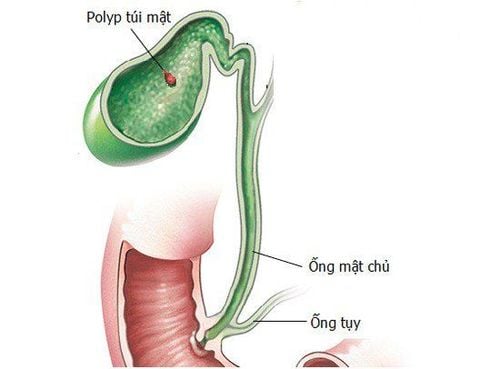
Hình ảnh mô phỏng Polyp túi mật trên y học lâm sàng
3. Causes of polyps and gallbladder tumors
There are many factors associated with polyp bile, such as: poor liver function, high blood fat, obesity, high blood sugar levels, high blood fat levels, irregular eating habits (high in fat and fat). ), hepatitis virus infection,... However, in fact, there are no studies to confirm the exact cause of gallbladder polyps.
4. Gallbladder polyp symptoms
Common clinical symptoms in patients with gallbladder tumors (gallbladder polyps) include:
Functions: Symptoms are quite vague, only manifest when gallbladder polyps cause disturbances in bile secretion. Patients often have mild pain in the right lower quadrant or epigastrium, pain after eating, may be accompanied by bloating, indigestion, nausea and vomiting; Body as a whole: No fever, no signs of biliary obstruction; Physical examination: Abdominal examination showed mild pain when pressing the right upper quadrant, most of the cases there were no abnormal signs. The doctor examines other organs for comorbidities.
5. Diagnosis of polyps and gallbladder tumors
Abdominal ultrasound: Useful when screening for gallstones, gallbladder polyps. Ultrasound helps to identify polyps, location, size, shape of polyps and monitor the progression of tumors to provide appropriate treatment. The accurate diagnosis rate of ultrasonography for gallbladder polyps is over 90%. The doctor will use ultrasound to evaluate other lesions in the liver as well as other organs in the abdomen,...; Contrast-enhanced cholangiography; Endoscopic retrograde cholangiography: Indicated when ultrasound fails; Computed tomography: In case of large polyps, there is a risk of malignancy; Magnetic resonance imaging: Indicated when malignant polyps are suspected; Biochemistry: Evaluation of liver and kidney function, hepatitis virus test, tumor immunity,...
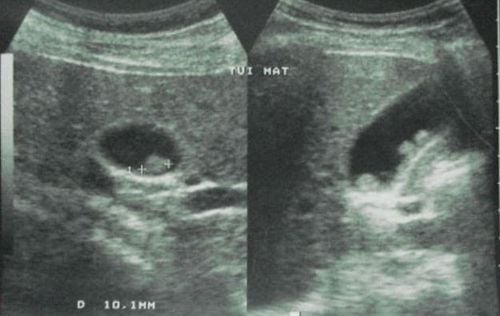
Hình ảnh polyp túi mật được chẩn đoán qua kỹ thuật siêu âm ổ bụng
6. Treatment of polyps and gallbladder tumors
The gallbladder belongs to the bile duct system, plays a role in regulating bile secretion and digesting food, so it is not possible to arbitrarily remove the gallbladder if it is not really necessary. Are gallbladder tumors dangerous? In fact, up to 92% of gallbladder polyps are benign (non-cancerous) so patients do not need to have their gallbladder removed.
With small polyps, less than 1cm in size, it is only necessary to periodically monitor every 3 - 6 months, in combination with changing eating and living habits. With polyps over 1cm in size and likely to progress to cancer (with signs such as spreading legs, irregular shape, rapid growth, ...) then cholecystectomy may be indicated. to reduce the risk of developing gallbladder cancer. Currently, most cholecystectomy surgeries are performed laparoscopically with the advantages of being less invasive, less painful, helping patients recover faster and reducing the risk of complications.
Gallbladder polyps, also known as gallbladder tumors, have a high benign rate. However, when there are warning symptoms of gallbladder polyps such as frequent right upper quadrant pain, fever, vomiting, etc., the patient should still go for a thorough examination and examination to be diagnosed and advised by a doctor. appropriate follow-up and treatment regimen.
Please dial HOTLINE for more information or register for an appointment HERE. Download MyVinmec app to make appointments faster and to manage your bookings easily.





